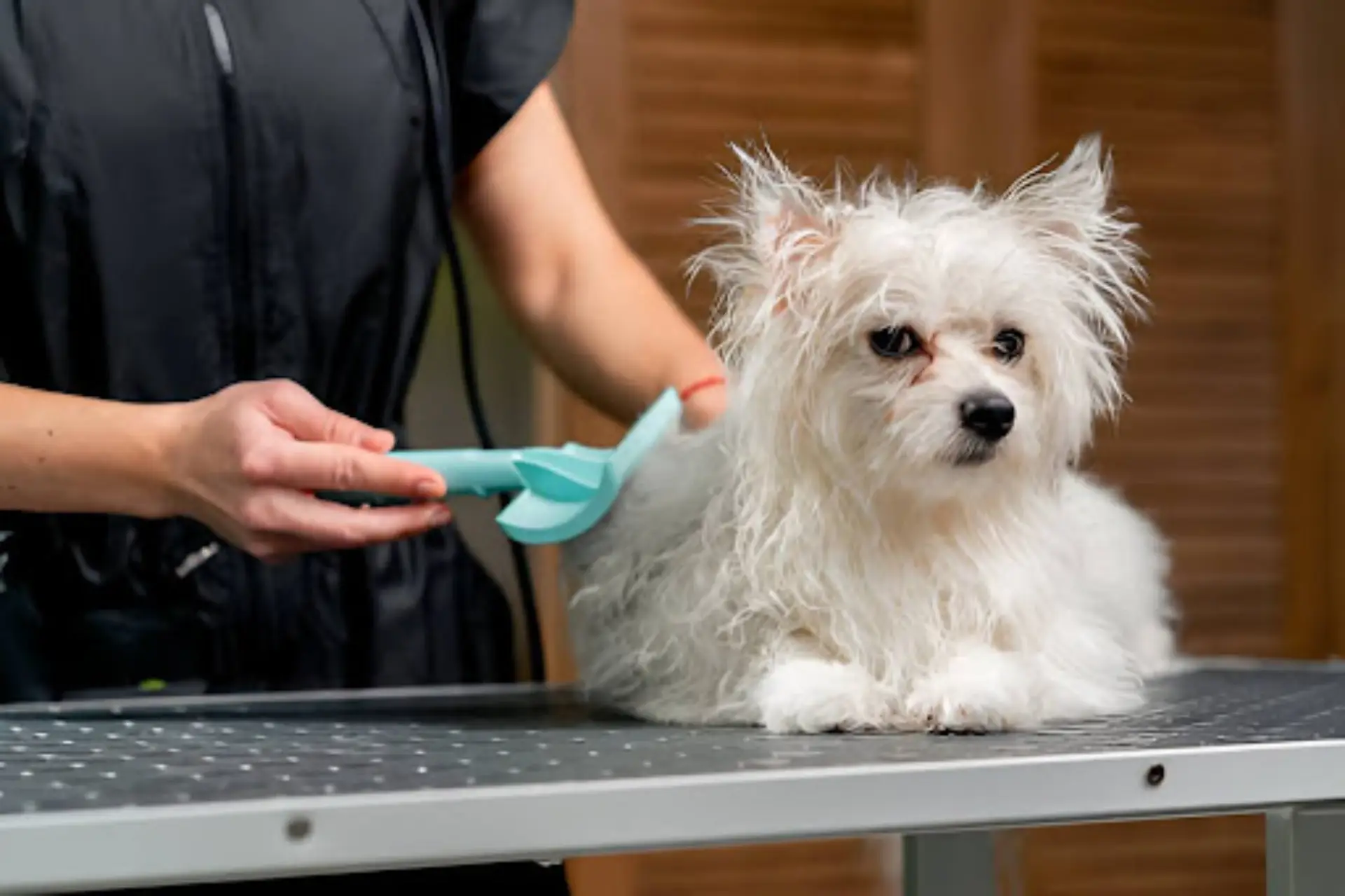Dogs with sensitive skin need special care to keep their coats healthy and irritation-free. Grooming can be challenging for pups prone to dryness, itching, or allergies, but with the right approach, you can soothe these skin woes and make grooming a comfortable experience. This guide covers essential tips and techniques for gentle grooming, from selecting the right products to understanding common triggers. With these steps, you can provide your dog the care they need for a happy, healthy coat.
Understanding Skin Conditions in Dogs: What Every Owner Should Know
Skin issues in dogs, often more common than many realize, range from mild irritations to chronic conditions requiring special care. With knowledge about dog skin conditions, owners can feel confident in providing grooming routines that support their dog’s comfort and promote a healthy coat. This informed approach helps ensure that each grooming session contributes to their dog’s overall well-being. For owners unfamiliar with their dog’s skin conditions and how to care for them, there are many ways to gain valuable knowledge, such as online resources and courses. Online dog grooming school courses are an excellent option, providing expert guidance on understanding and managing sensitive skin care for dogs. These courses cover essential skills like identifying skin conditions, choosing the right hypoallergenic products, and using gentle grooming techniques.
1. Common Causes of Skin Conditions
Skin issues in dogs often stem from allergies (environmental, food, or flea-related), bacterial or fungal infections, and parasites. Hormonal imbalances and genetic predispositions can also lead to recurring skin conditions in certain breeds.
2. Signs to Watch For
Symptoms of skin problems include excessive scratching, licking, or biting. You may also notice red or flaky skin, hair loss, rashes, or an unusual odor. Regularly checking your dog’s coat during grooming can help you catch these signs sooner.
3. Allergies and Sensitivities
Allergies are a leading cause of skin irritation. Dogs may react to specific ingredients in their diet, outdoor allergens like pollen, or even household products. Identifying the trigger, whether through diet trials or vet-recommended tests, is essential for effective treatment.
4. Prevention and Care Tips
Regular grooming helps prevent many skin issues by keeping your dog’s coat clean and free of irritants. Use gentle, dog-specific shampoos and conditioners, especially if your dog has sensitive skin. Keep an eye on the skin’s condition and consult your vet if you notice any changes.
5. When to Seek Veterinary Help
If your dog’s skin issues persist or worsen, a visit to the vet is crucial. Chronic conditions or infections require a professional diagnosis and may need specific medications or treatments to manage effectively.
Why Is My Dog’s Skin So Sensitive? Common Causes Explained
Dogs can develop sensitive skin for a variety of reasons, and understanding these causes can help you provide the right care. Sensitive skin may lead to itching, redness, or discomfort, affecting your dog’s overall well-being. Here are some common causes of skin sensitivity in dogs:
1. Allergies
Allergies are a frequent culprit behind skin sensitivity. Dogs can be allergic to food ingredients, environmental factors like pollen, or even flea bites. Food allergies often cause skin reactions around the face, ears, and paws, while environmental allergens may lead to itching all over the body.
2. Parasites
Fleas, ticks, and mites can lead to severe skin irritation. Dogs that are allergic to flea saliva experience an intense reaction to even a single bite, causing itching, redness, and hair loss. Regular parasite prevention is crucial to keep these issues at bay.
3. Genetic Factors
Some breeds are more prone to skin sensitivities due to their genetic makeup. Breeds like West Highland White Terriers, Bulldogs, and Retrievers are known to have more delicate skin that’s susceptible to allergies and irritation.
4. Skin Infections
Bacterial or fungal infections can make your dog’s skin particularly sensitive. These infections may arise due to moisture trapped under the coat, especially in breeds with skin folds. Symptoms can include redness, odor, and discomfort, which require veterinary treatment.
5. Environmental Irritants
Dogs can be sensitive to substances in their environment, such as cleaning products, grass, or even certain grooming products. If you’ve recently introduced a new product or your dog has been exposed to certain plants, consider if these could be the cause.
6. Hormonal Imbalances
Conditions like hypothyroidism or Cushing’s disease can lead to dry, sensitive skin. These hormonal imbalances affect skin and coat health, often causing hair thinning, itchiness, and other skin-related symptoms that require medical treatment.
7. Poor Diet
A lack of essential fatty acids and nutrients can impact skin health, leading to dryness and sensitivity. Feeding a balanced diet with adequate omega-3 and omega-6 fatty acids helps maintain a healthy, resilient coat and skin.
Must Read: 10 Image Retouching Techniques Every Photographer Should Know
How to Comfortably Groom Dogs with Sensitive Skin Issues
Grooming dogs with sensitive skin requires extra care to keep them comfortable and avoid irritation. With the right tools, techniques, and products, you can make grooming a soothing experience that benefits both their skin and coat health. Here’s how to approach grooming for dogs with sensitive skin:
1. Choose Gentle, Hypoallergenic Products
Opt for dog-specific, hypoallergenic shampoos and conditioners free of harsh chemicals, fragrances, and dyes. Look for products with soothing ingredients like oatmeal, aloe vera, or chamomile to reduce irritation and keep their skin calm.
2. Use Soft Grooming Tools
Select brushes and combs with soft bristles or flexible pins designed for sensitive skin. Slicker brushes with softer, rounded tips work well on delicate skin, while rubber curry brushes can gently remove loose hair without irritating it.
3. Brush Gently and Slowly
Don’t pull or scratch the skin when brushing. Start by brushing in the direction of hair growth and focus on patiently untangling any small knots. For areas prone to matting, like behind the ears or around the legs, go slowly to prevent discomfort.
4. Keep Baths Warm and Short
Use lukewarm water to prevent skin from drying out, and keep the bath short to avoid stripping natural oils. After a thorough rinse, use a soft towel to gently pat your dog’s coat dry, as rubbing can irritate sensitive skin. Rubbing can irritate sensitive skin while patting is gentler and more comfortable.
5. Avoid Over-Grooming
Sensitive-skinned dogs benefit from a less-is-more approach to grooming. Limit baths and brushing sessions to prevent excessive removal of natural oils, which are essential for keeping their skin healthy and hydrated. Regular, moderate grooming is better than frequent, intense sessions.
6. Use Calming Techniques
Make grooming a positive experience by incorporating treats, praise, and a calm tone. Creating a relaxed environment helps reduce stress, which can further irritate sensitive skin. Some dogs respond well to soothing music or having a familiar toy nearby during grooming.
7. Consult with Your Veterinarian for Special Needs
If your dog has recurring or severe skin issues, consult your veterinarian before trying new products or techniques. Some dogs may require medicated shampoos or specific grooming routines to keep their skin condition under control.
Key Tips To Avoid For Dogs With Sensitive Skin: Expert Recommendations
- When grooming dogs with sensitive skin, it’s essential to use methods that keep their skin comfortable and irritation-free. Experts recommend avoiding certain practices that can worsen sensitivity. Here are the top grooming tips to avoid for dogs with sensitive skin:
- Avoid Using Harsh Products: Skip shampoos and conditioners with artificial fragrances, dyes, or strong chemicals. The ingredients in these products can strip your dog’s skin of natural oils and cause irritation. You should instead choose gentle, hypoallergenic products that are designed for sensitive skin.
- Don’t Over-Bathe: Bathing too often can dry out your dog’s skin, which is particularly problematic for sensitive skin types. Overbathing removes essential oils that help protect the skin. Stick to bathing once every 4-6 weeks, unless advised otherwise by a veterinarian.
- Steer Clear of Rough Brushing: Hard brushing can scratch sensitive skin, leading to irritation and discomfort. Choose soft-bristled or rounded-tip brushes and use gentle strokes. Avoid excessive pressure, especially on areas like the belly and legs.
- Refrain from Hot Water Baths: Hot water can be too harsh for dogs with sensitive skin, potentially causing dryness and irritation. Use lukewarm water instead, which is soothing and safe. Keep baths short to prevent skin dehydration.
- Skip Rubbing Dry with a Towel: Rubbing with a towel can cause friction, irritating sensitive skin. Pat your dog’s coat dry with a soft towel after bathing. This method is gentler, reducing the risk of aggravation.
- Avoid Ignoring Skin Changes: Sensitive skin requires careful monitoring. Redness, flakiness, or bumps can be signs of underlying issues, and ignoring these changes may lead to discomfort. Check regularly for unusual signs and consult your vet if needed.
- Limit the Use of Grooming Tools with Hard Bristles: Grooming tools with hard bristles can be too harsh. Select brushes with softer bristles to keep the grooming experience comfortable. Gentle tools make a noticeable difference in keeping sensitive skin protected.
Conclusion
Grooming dogs with sensitive skin can be challenging, but with the right techniques, you can make it a soothing and beneficial routine. By choosing gentle, hypoallergenic products, using soft brushes, and keeping sessions calm, you help prevent irritation and support healthy skin. Consistent care and attention to any skin changes allow you to catch potential issues early, ensuring your dog’s comfort and well-being. With these mindful grooming practices, you’re not only caring for your dog’s sensitive skin but also strengthening the bond you share.





